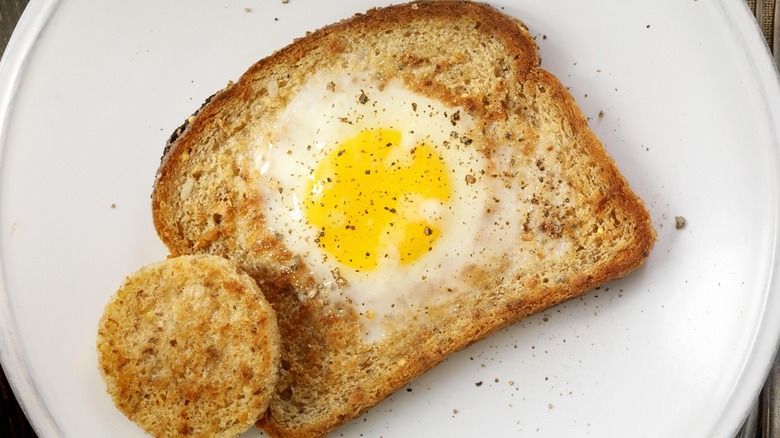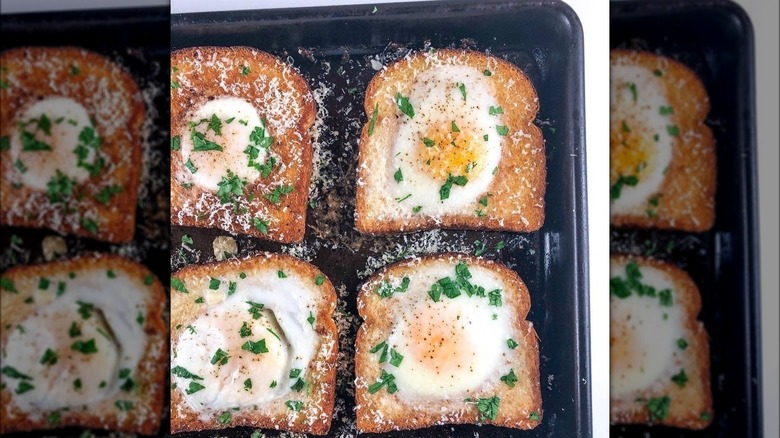Cook Your Egg-In-A-Hole In The Oven For The Best All-Around Texture
There are more than 60 different monikers that eggs-in-a-hole go by. Perhaps you know this dish better as gashouse eggs, or eggs-in-a-basket. Regardless of what you call this breakfast fave, its concept remains the same: cut a hole in the middle of a slice of bread, crack an egg in it, and cook until the bread is nice and toasty and your egg is the perfect shade of sunny-side up.
Minus the potential name confusion, that seems pretty simple. However, as anybody who has ever made this dish with multiple aliases may know, executing it perfectly can be a bit of a challenge — especially if you have to make more than one. Just a few extra seconds of cook time can result in an overcooked egg, burnt toast, or both — and there's also a risk of undercooking the components. Surely there has to be a method that will get you near-perfect texture every time...right? As it turns out, there is.
Earlier this year, The Kitchn's Ann Taylor Pittman put five egg-in-a-basket cooking techniques to the test and found that making them on a sheet pan in the oven produced superior textural results. "The bread was beautifully golden brown on both sides, and the egg was equally gorgeous and delicious – with a tender (but fully set) white and wonderfully gooey, creamy yolk," Pittman explained. On the flip side, Pittman found that using the air fryer made for the least appealing egg-in-a-hole.
Why the oven is the best method for making eggs-in-a-hole
More often than not, recipes for eggs-in-a-hole call for cooking them in a pan on the stove. For Pittman, using a cast iron pan produced a sub-par breakfast that they rated 6 out of 10, while non-stick helped them improve to 7 out of 10. Interestingly enough, starting the dish in a cast iron pan and then transferring it to the oven was the second-best option, but ultimately, Pittman found that baking the breakfast dish on a sheet pan in the oven yielded the best texture results.
So why is this the best method for making eggs-in-a-hole? It works because the oven offers a more even, all-around temperature, whereas the stovetop heats the underside of the bread and egg more than the top, potentially burning the bottom of your egg-in-a-hole while the top remains underdone. Using the oven also eliminates any pesky flipping, and allows you to cook several eggs-in-a-hole at once, so you can have breakfast ready for your family in a matter of 20 minutes.
To make your own sheet pan version of this dish, start by pre-heating the oven to 400 degrees. Next, remove a circle from the middle of each slice of bread and arrange them on a greased sheet pan. Finally, crack an egg inside of each hole, season with salt and pepper, and bake for 8 to 10 minutes for a perfect clutch of eggs-in-a-hole.

